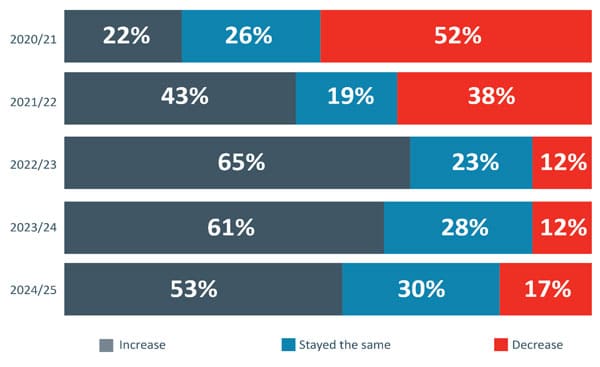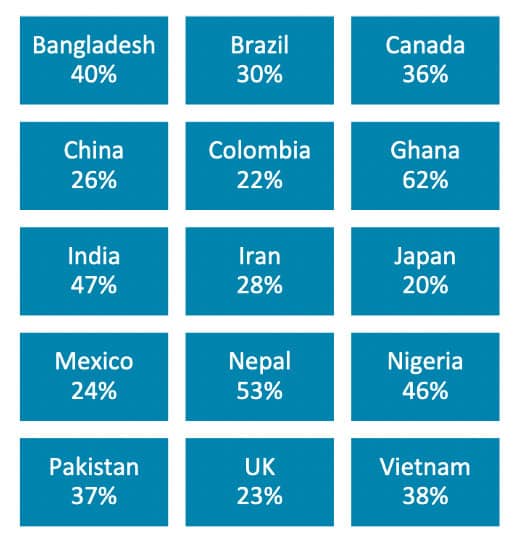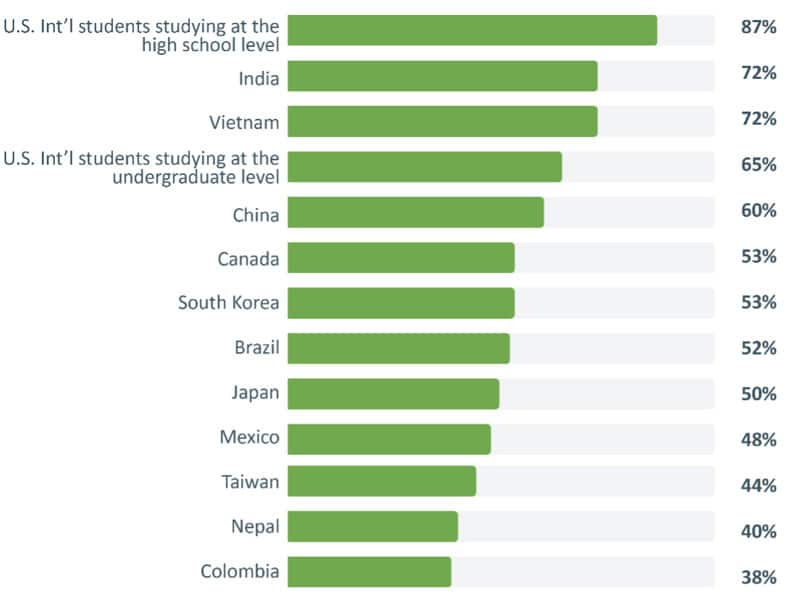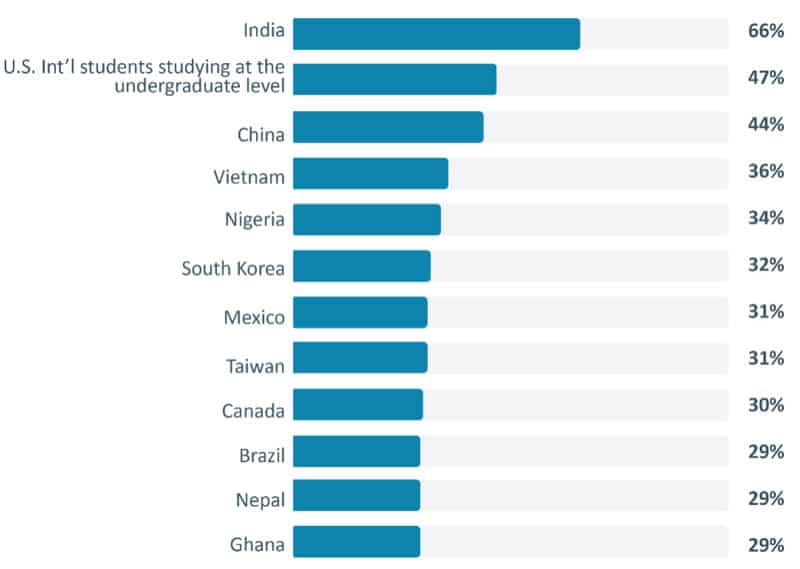The Spring 2024 Snapshot Survey from the Institute for International Education (IIE) suggests that international applications to US colleges continue to grow – albeit at a slower pace than last year. In spring 2023, 61% of institutions reported growing numbers of applications, compared with 53% this year.
The IIE’s latest Snapshot report presents data from 662 US higher education institutions that illustrate trends in (1) international student applications for the 2024/25 academic year and (2) trends in overseas recruitment practices and priorities.
The Spring 2024 Snapshot found that just over half (53%) of American colleges and universities are seeing a boost in 2024/2025 international applications compared to last year, 30% have experienced no change, and 17% have received fewer applications.
All institutional types and academic levels reported that increases in applications outweighed decreases, including undergraduate, graduate, and non-degree. However, trends were more positive at associate’s colleges (61% said applications had increased, 7% said they had decreased) and master’s colleges (58% reported increases, 16% noted decreases) than at doctoral universities and special focus institutions (26% and 23%, respectively, reported declines).

One notable finding is the strong growth in application numbers from West Africa and South Asia. Overall, college applications from Ghana grew the most (62%), followed by Nepal (53%), India (47%), Nigeria (46%), Bangladesh (40%), Vietnam (38%), and Pakistan (37%). Application numbers from China also grew, but at a slower pace (26%). While the growth in applications from sub-Saharan Africa is notable, high visa refusal rates for applicants from countries such as Nigeria and Ghana will impact final enrolment numbers from the region.

International recruitment funding remains strong
The Spring Snapshot provides a strong indication of where US colleges and universities plan to focus their recruitment efforts in the year ahead. American higher education educators continue to invest significantly in international recruitment, with a large majority (85%) of institutions reporting that financial support for student recruitment efforts is the same or higher than in previous years, a figure stable across institution types.
In terms of geography, colleges and universities are still largely focusing their undergraduate recruitment efforts in the largest sending markets—India (72%), Vietnam (72%), China (60%), Canada (53%), and South Korea (53%), though the greatest recruitment focus remains international students already studying at the high school level within the United States (87%). One interesting finding is that China, the largest sender of undergraduate students to the United States, ranks only fifth in terms of recruitment importance. This may reflect a desire to diversity undergraduate recruitment strategies beyond China, the report notes.

At the graduate level, around two-thirds of institutions (66%) are focusing their international recruitment efforts on India, with strong focus also on China (44%), Vietnam (36%), Nigeria (34%), South Korea (32%), Mexico (31%), and Taiwan (31%). Nearly half (47%) of institutions also plan to focus recruitment efforts on international undergraduate students already in the United States.

US institutions continue to employ a broad range of international recruitment strategies. At the undergraduate level, US colleges and universities rely on current students (70%), social media outreach (63%), leveraging international partnerships (63%), and alumni (56%). A focus on in-person events in-country (57%) and a reliance on agents (58%) are also key recruitment tactics. At the graduate level, more institutions use alumni networks (61%) and online recruitment events (54%) to drive interest, while the use of agents (58%) remains strong.
Meanwhile, outbound US study abroad numbers continue to grow
The report also looks at outbound study abroad numbers from American institutions. A large majority (94%) of US colleges and universities report increased or stable participation in study abroad programmes for the upcoming 2024/25 year, an increase noted across all institution types. This growth in study abroad continues an upward trajectory since the dramatic drop in numbers experienced during the COVID-19 pandemic.
American institutions note some fascinating trends in terms of popular study abroad destinations. While European locations like the UK, Spain, and Italy continue to be the most coveted options for in-person study abroad programmes, the Snapshot reports a growing institutional focus beyond Europe, with countries like Costa Rica, Japan, South Korea, Australia, and Argentina now popular destinations for Americans studying abroad. Meanwhile, global geopolitical issues seem to have dimmed interest in study abroad programmes in China and Israel.
Finally, the report makes mention of a growing trend toward making American study abroad programmes more environmentally sustainable. Among those institutions responding to IIE’s 2024 Snapshot, a good 45% of institutions have implemented sustainable study abroad initiatives, including the expansion of virtual exchange options and pursuing lower carbon travel options (such as train travel) at the destination.
For additional background, please see:
Source